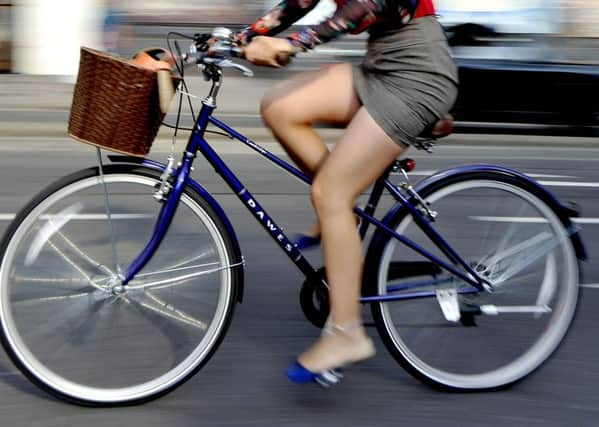Kevan Christie: Cycling is healthy but it does carry other risks


There can be no doubt that the health benefits associated with getting on your bike are many and tie in with the current debate around preventative and exercise medicine.
The figures published in the British Medical Journal on the back of the largest research ever carried out in this area, by experts from the University of Glasgow, are impressive. The study finding that commuters who cycled were associated with an overall 41 per cent lower risk of premature death. The statistics for walking to work are also decent although lower than cycling, due to walkers commuting shorter distances – typically six miles per week, compared with 30 miles – and walking is generally a form of lower intensity exercise.
Advertisement
Hide AdAdvertisement
Hide AdHowever, as welcome as the news is, the yellow lycra-clad elephant in the room cannot be ignored. Cycling in Scotland is way too dangerous.
Factor in the pollution from diesel fumes in our big cities and the behaviour of some drivers and the daily commute quickly becomes trench warfare, with the other side lobbing mustard gas at you. It’s got so bad that many cyclists now have cameras built into their helmets like squaddies on patrol to record the inevitable conflict.
Take Edinburgh for example. Injuries caused by tram tracks over the past seven years have cost the NHS more than £1 million – with 191 cyclists, 119 men and 72 women, sustaining cycling injuries from the tracks. The most common injury was getting the bike wheel caught in the tram track (142) – ouch – while the second was the wheel sliding on a tram track.
At least 55 patients had upper limb fractures or dislocations, while eight sustained lower limb fractures and two had facial fractures – tagline “take the bike and break a leg”.
Then there’s the weather – no Formula One type wheel changes allowed as you battle horizontal rain to make it to the office on time. Instead your risk goes up with predictably more accidents likely to occur in wet conditions – and all this happens before you’ve started your shift.
More definitely needs done to encourage people to cycle – particularly now that this research provides such overwhelming evidence of the health benefits. A greater share of the transport budget should be made available for the walking and cycling infrastructure to help create a healthier environment.
Cycling rates in Scotland have fallen despite the growing interest across the country on the back of Sir Chris Hoy’s Olympic achievements and increased coverage of the sport. The proportion of journeys by bike fell to 1.2 per cent last year from 1.4 per cent in 2015 according to Scottish Government figures. A survey of more than 2,000 adults across the UK also found that one in eight cannot ride a bike, while almost half of Scots sampled said they did not own a bicyle.
Lastly, cyclists are not all “angels on wheels” here. There is a perception – and it may just be that – but a number of cyclists on Scotland’s roads may fall into the white middle-class male, angry project manager category – itching for a fight. A more pumped up version of the benign Mamil (middle-aged man in lycra). Their stress is understandable but a little PR could go a long way towards improving health.